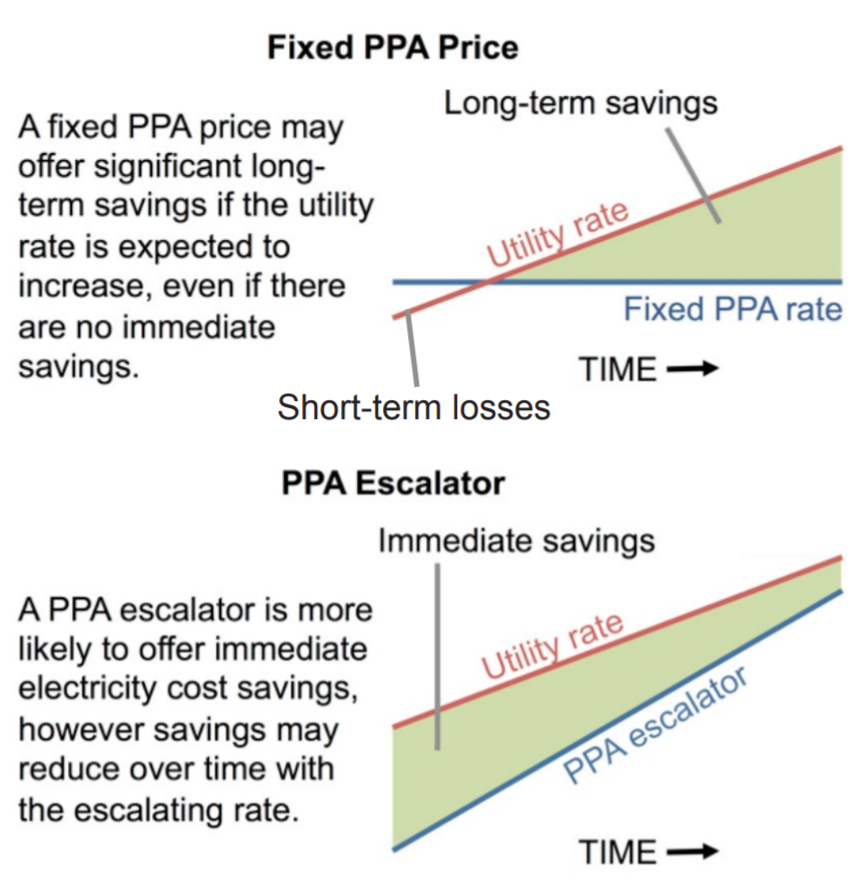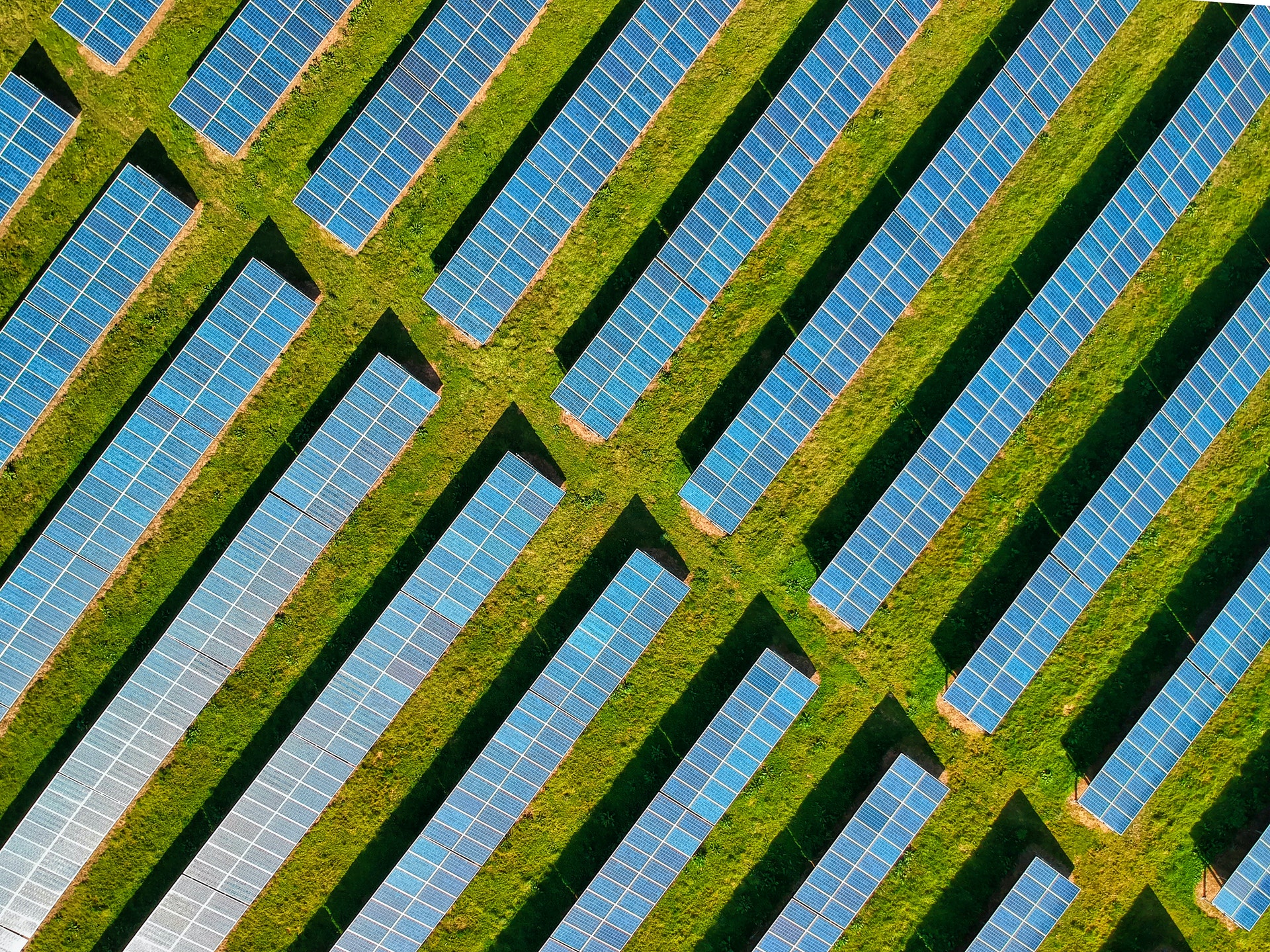Colleges and universities across the United States are using power purchase agreements (PPAs) to facilitate solar deployment. According to a report from the National Renewable Energy Laboratory, PPAs led to the deployment of over 100 MW of solar up to 2016. In this blog post, we’re going to explore PPAs for universities and colleges, but before diving right in, you may wish to read the National Renewable Energy Laboratory’s list of key PPA terms at this link.
What is a Power Purchase Agreement?
A power purchase agreement allows an offtaker to purchase power from a developer at an agreed-upon rate, for a specified period, without taking ownership of the system. The developer is responsible for procuring and constructing the solar project, as well as the operation & maintenance of the system, which may be located either onsite or offsite. Whether the system is on the premises or located remotely, a PPA allows the offtaker to see the benefits of solar without owning the system. With regards to the topic at hand, the university would be in the role of offtaker, working with a solar developer to accrue the benefits of solar PV without claiming ownership of the system itself.
How Does a Power Purchase Agreement Work?
As noted above, the university/offtaker would purchase power at a negotiated rate ($/kWh) for a certain period of time, without taking ownership of the solar PV system. Either the project developer or, in some cases, tax equity investor, would own the system. Again, the developer remains responsible for procurement, construction, operations, maintenance, etc.
What is the PPA Process?
This report from the National Renewable Energy Laboratory (NREL) breaks down the PPA Process into three key steps—Preliminary Assessment, Finding a Project Developer, and PPA Negotiation. Below, we will explore these three steps using information from the NREL report.
#1. Preliminary Assessment
The first step in the process is to determine the viability of solar PV for the university in question. Generally, universities wish to determine both the economic feasibility of a solar project, as well as whether or not solar PV aligns with other university goals and values. Prospective project developers can carry out preliminary site assessments at locations which may be used for the solar array.
#2. Finding a Project Developer
Generally speaking, offtakers will use a request for proposal (RFP) in order to solicit PPA bids. RFPs allow universities to identify which elements will be negotiable and nonnegotiable during the PPA development process. A competitive bidding process will also allow the university to identify the ideal developer based on factors like experience, financial stability, performance guarantees, and more.
#3. PPA Negotiation
Once the university has identified a suitable project developer following the RFP bidding process, it’s time to negotiate the PPA. Items to negotiate as part of the long-term power purchase agreement include:
- Site rights (license, easement, lease, etc.)
- Contract term
- Price structure
- Ownership of environmental attributes
PPAs usually range somewhere from 15 to 25 years, which makes sense given the expected lifetime of solar panels, and may factor in options for the offtaker following the conclusion of the PPA term. These options can include:
- Contract termination and system removal
- Contract renewal
- Purchase of system at fair market value
A vital part of this negotiation process involves determining the pricing structure of the PPA. This typically goes one of two ways, either the pricing structure aims to maximize long-term cost savings, or it prioritizes immediate electricity cost savings. Ultimately, the PPA pricing structure hinges on which of these two options the university/offtaker wishes to pursue—a fixed PPA price or an PPA escalator.
- Fixed PPA Price: This is a price which is higher than the current utility electricity rate, but offers long-term savings if the utility rate is projected to rise above this fixed PPA rate in the future.
- PPA Escalator: With a PPA escalator, the PPA price increases steadily over time at a rate negotiated by the offtaker and the developer. This is typically at a rate below 3%.
The chart below, courtesy of the NREL report on university PPAs, identifies the key differences between a fixed PPA price, and a PPA escalator.
As noted above, another aspect of the negotiation process concerns ownership of environmental incentives and attributes. This refers to renewable energy certificates (RECs), which can be used to meet clean energy requirements and goals. In some cases, the university/offtaker may wish to claim ownership of these RECs in order to meet climate related targets, but it could improve the economics of the project if the developer takes ownership of the RECs. The NREL offers more detailed information on RECs at this link.
Benefits of a PPA
There are a number of reasons why universities across the United States are using power purchases agreements to deploy solar PV.
- Tax Equity: As universities are generally listed as public agencies/nonprofit organizations and typically do not pay taxes, tax equity investors may come onboard with a PPA solar project. This means that the tax incentives available for solar will not be ‘wasted’ in the process, and the university can benefit indirectly from these incentives through lower electricity rates. Full details of how tax equity investors and universities can work together to avail of these incentives are available here.
- No upfront cost: A PPA allows the university to receive the benefits of solar without a large upfront investment in the project.
- No extra budgetary outlays: Existing electricity expenditures can be incorporated into the PPA, and no extra outlay is required for maintenance or operational costs.
- Safeguard against volatile utility rates: Utility rates are uncertain, so a PPA pricing structure offers universities cost certainty for the term of the contract.
- Simplicity of procedure & maintenance: The developer handles all installation, operations and maintenance associated with the project.
Challenges of a PPA
Of course, despite all these benefits, there are some challenges and obstacles which can be associated with a solar PPA for universities.
- PPAs are not currently available in all states.
- There is a learning curve associated with PPAs for university staff.
- CFOs, in some cases, may be reluctant to enter into such a long-term contract for their power.
- Higher PPA prices may result from low university creditworthiness.
Which States Allow PPAs?
Although state regulations may limit or restrict the sale of electricity by non-utility providers in regulated markets, certain states have facilitated PPAs through clarifications regarding third-party system owners. To learn about the PPA policy in your state, consult The Database for State Incentives for Renewables and Efficiency.
If you represent a school, university, or other educational facility, then you could benefit from a solar PPA. YSG has been operating in the solar market for over ten years and will guide you through the entire process of going solar, from start to finish. Send us an email or call at 212.389.9215 to learn more.
YSG Solar is a project development vehicle responsible for commoditizing energy infrastructure projects. We work with long-term owners and operators to provide clean energy assets with stable, predictable cash flows. YSG's market focus is distributed generation and utility-scale projects located within North America.
Sources:
All information in this blog post is courtesy of this document from the National Renewable Energy Laboratory.
Featured Photo by Red Zeppelin from Pexels.

